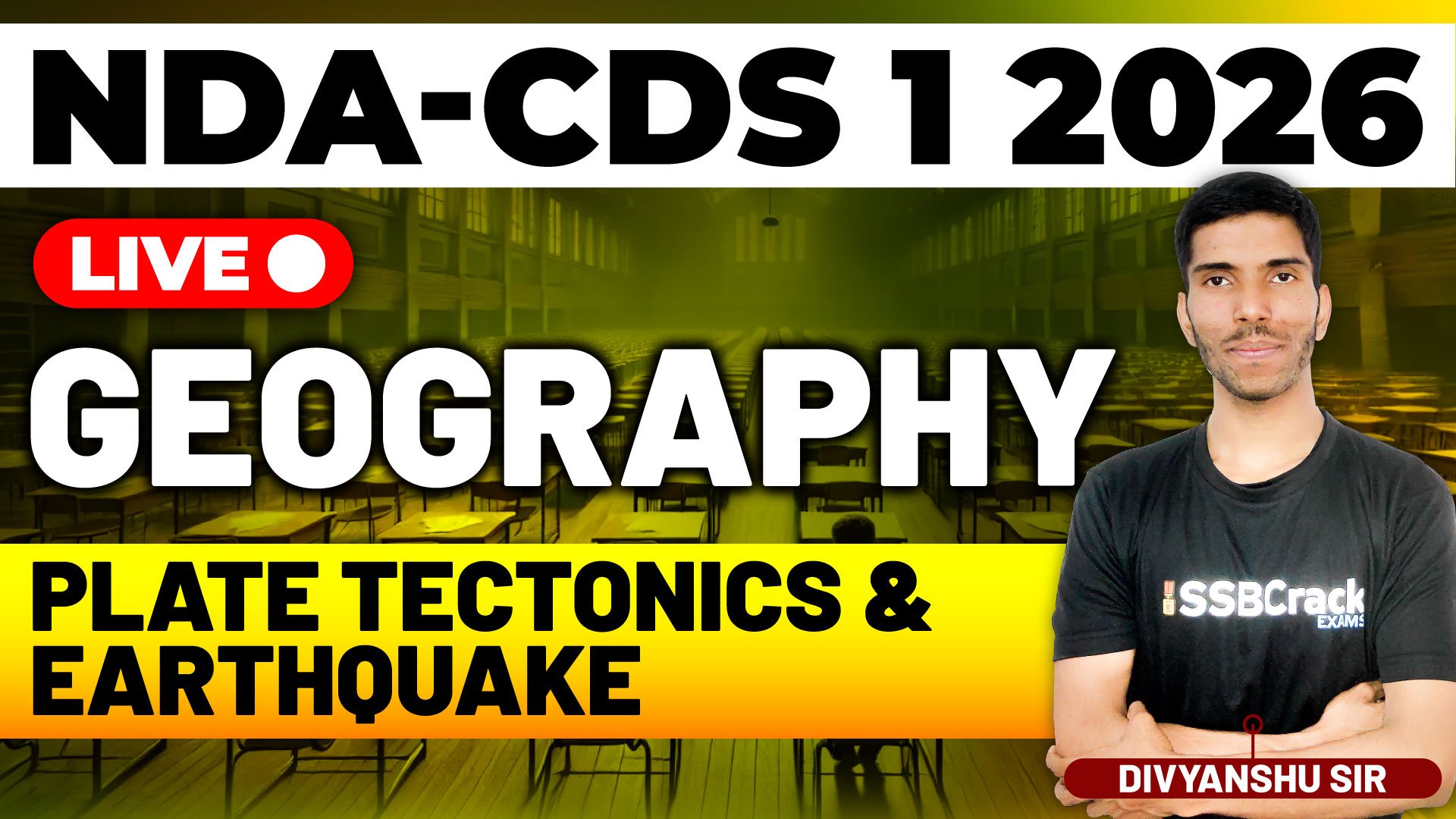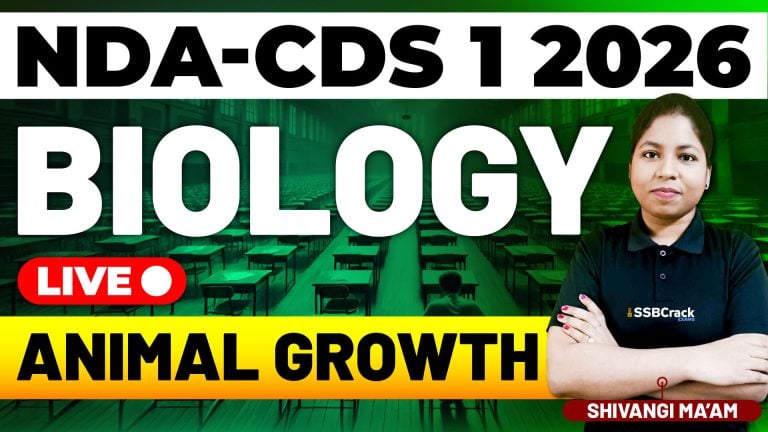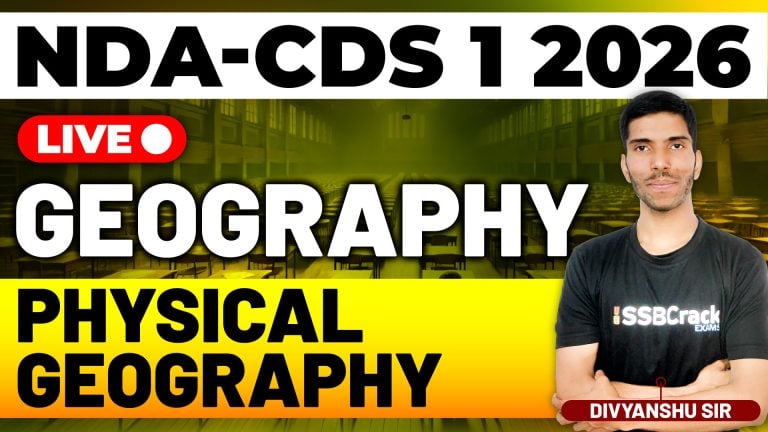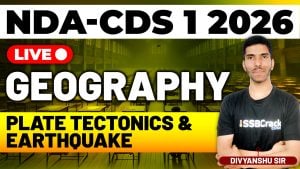The Earth’s surface is not a single, solid layer but is divided into several large and small fragments known as tectonic plates.
NDA & CDS 1 2026 Exam Geography Live – Plate Tectonics & Earthquake
Introduction
The Earth’s surface is not a single, solid layer but is divided into several large and small fragments known as tectonic plates. These plates float on the semi-molten layer of the mantle called the asthenosphere. The movement and interaction of these plates form the foundation of the Plate Tectonic Theory, which explains various geological phenomena, including earthquakes, volcanic activity, and mountain formation.
Plate Tectonic Theory
Proposed in the 1960s, the Plate Tectonic Theory combined the earlier concepts of continental drift (by Alfred Wegener) and seafloor spreading. It states that the Earth’s lithosphere is broken into several rigid plates that move continuously due to convection currents in the mantle.
There are seven major tectonic plates:
- Pacific Plate
- North American Plate
- South American Plate
- Eurasian Plate
- African Plate
- Indo-Australian Plate
- Antarctic Plate
In addition, there are several minor plates like the Nazca Plate, Arabian Plate, and Philippine Plate.
Types of Plate Boundaries
The movement of plates creates boundaries where geological activity is most intense. There are three main types of plate boundaries:
- Convergent Boundaries (Destructive Boundaries)
- Plates move towards each other.
- One plate may subduct beneath the other, forming deep ocean trenches and causing earthquakes and volcanic arcs.
- Example: Indian Plate and Eurasian Plate collision formed the Himalayas.
- Divergent Boundaries (Constructive Boundaries)
- Plates move away from each other, and magma rises to form new crust.
- Found mainly along mid-ocean ridges like the Mid-Atlantic Ridge.
- Earthquakes here are shallow but frequent.
- Transform Boundaries (Conservative Boundaries)
- Plates slide past each other horizontally.
- Friction builds up until rocks fracture, releasing energy as earthquakes.
- Example: San Andreas Fault in California.
Relation Between Plate Tectonics and Earthquakes
Earthquakes primarily occur due to the sudden release of energy stored in rocks along plate boundaries. As plates move, stress accumulates in the crust until it exceeds the rock’s strength, causing it to break and release energy in the form of seismic waves.
The point within the Earth where the earthquake originates is called the focus (hypocenter), and the point directly above it on the surface is called the epicenter.
Most earthquakes are concentrated along plate boundaries, such as:
- Pacific Ring of Fire — the world’s most seismically active region.
- Himalayan Belt — caused by the collision of the Indian and Eurasian plates.
Measurement of Earthquakes
- Magnitude: Measured on the Richter Scale or Moment Magnitude Scale (Mw).
- Intensity: Measured by the Modified Mercalli Scale (MMI), which assesses damage on the surface.
- Seismograph: Instrument used to record seismic waves.
Major Earthquakes and Plate Movements
- 2004 Indian Ocean Earthquake (Magnitude 9.1) — Caused by subduction of the Indo-Australian Plate beneath the Eurasian Plate.
- 2011 Japan Earthquake (Magnitude 9.0) — Occurred due to the Pacific Plate subducting beneath the North American Plate.
- 2015 Nepal Earthquake (Magnitude 7.8) — Resulted from the ongoing collision between the Indian and Eurasian plates.
Conclusion
The Plate Tectonic Theory provides a scientific explanation for the distribution and cause of earthquakes across the globe. Understanding these plate interactions helps scientists predict earthquake-prone areas and develop safer building designs and disaster management plans. While plate movements are a natural and continuous process, studying them remains crucial for minimizing human loss and infrastructure damage.



















